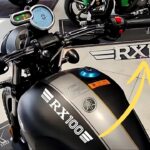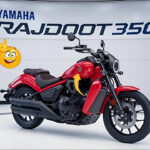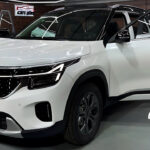Hyundai Creta EV: The Hyundai Creta Electric made its official debut on January 17, 2025, at the Bharat Mobility Expo, marking a significant milestone as Hyundai’s first locally produced electric SUV in India. This launch represents more than just another electric vehicle entering the market—it signifies the electrification of India’s most beloved SUV nameplate.
Since its initial launch in 2015, the Hyundai Creta has been a massive success, leading Hyundai India to record sales with 186,919 models sold in 2024, accounting for over 30% of the company’s total sales. The electric variant is poised to continue this legacy while addressing the growing demand for sustainable mobility solutions.
Pricing Strategy and Market Positioning
The Creta Electric is priced starting at ₹17.99 lakh for the base Executive variant and goes up to ₹24.38 lakh for the top Excellence variant. This pricing strategy places it competitively against rivals including the Maruti e Vitara, Tata Curvv EV, and MG ZS EV.
Variant Breakdown:
-
Executive: ₹17.99 lakh
-
Smart: ₹19.99 lakh
-
Smart (O): ₹21.49 lakh
-
Premium: ₹22.99 lakh
-
Excellence: ₹24.38 lakh
The electric variant commands a premium of approximately ₹3 lakh over its ICE counterpart, which starts at around ₹11.11 lakh. This premium is justified by the advanced electric drivetrain, additional features, and enhanced performance characteristics.
Battery Technology and Range Capabilities
Hyundai offers the Creta Electric with two battery pack options: a 42 kWh variant providing 390 km range and a 51.4 kWh Long Range variant delivering up to 473 km range, both certified by ARAI. This dual-battery strategy caters to different user requirements and budget considerations.
Battery Specifications:
-
Chemistry: Nickel Manganese Cobalt (NMC)
-
Warranty: 8 years/1,60,000 km
-
Protection: IP67-rated battery pack
-
Testing: 16-feet drop test and water soak test certified
The Long Range variant provides 473 km range according to ARAI certification, making it competitive with rivals like the MG ZS EV (461 km WLTP) and positioning it well against upcoming competitors like the Tata Curvv EV and Maruti Suzuki eVX.
Performance and Driving Dynamics
The Creta Electric delivers 133 bhp (135 PS) power and 200 Nm torque in the standard variant, while the Long Range variant produces 171 PS and 255 Nm torque, enabling acceleration from 0-100 km/h in just 7.9 seconds.
Performance Highlights:
-
Single front-wheel-drive motor configuration
-
Three driving modes: Eco, Normal, and Sport
-
Regenerative braking with ADAS integration
-
Top speed: 160 km/h (electronically limited)
-
Linear power delivery without sudden surges
The torque output of 255 Nm matches the diesel variant’s 250 Nm and is close to the turbo-petrol’s 260 Nm, but being an EV, the power delivery is exceptionally linear and smooth.
Charging Infrastructure and Capabilities
The Creta Electric supports comprehensive charging options with DC fast charging from 10% to 80% in 58 minutes using a 50 kW charger, while 11 kW AC charging provides full charge (10% to 100%) in approximately 4 hours for the 42 kWh variant and 4 hours 50 minutes for the 51.4 kWh version.
Charging Ecosystem: Hyundai has announced plans to establish a pan-India fast charging network of 600 stations over seven years, with 50 stations already operational across key cities and national highways. Additionally, the myHyundai app provides access to over 10,000 EV charging points across the country.
Advanced Charging Features:
-
Vehicle-to-Load (V2L) capability with 3.5 kW output
-
In-car payment system for charging
-
Wallet-based payment integration
-
Mobile app for charger location and payments
Design Philosophy and Aesthetic Evolution
The Creta Electric maintains visual similarity to its ICE counterpart while incorporating EV-specific design elements including revised front and rear bumpers, a new grille with integrated charging port, EV-specific 17-inch alloy wheels with aero inserts, and an ‘Electric’ badge on the tailgate.
Exterior Design Elements:
-
Pixelated front grille inspired by Ioniq 5
-
Active air flaps for improved aerodynamics
-
Low rolling resistance tires
-
LED lighting signature throughout
-
Aerodynamically optimized alloy wheels
The design takes inspiration from the Creta N Line, particularly at the front, with the enclosed grille featuring a pixelated theme that extends to the closed front air dam.
Interior Innovation and Technology Integration
Inside, the Creta Electric features a reworked center console, new three-spoke steering wheel, dual-tone upholstery, and dual 10.25-inch screens with EV-specific UI including a distinctive Morse-code ‘H’ logo.
Technology Features:
-
Floating center console with cooled storage
-
Ambient lighting throughout cabin
-
Wireless charging capability
-
Digital key functionality
-
Shift-by-wire driving system
-
Level 2 ADAS with 6 airbags
-
360-degree camera system
Additional features include rain-sensing wipers, electric front seats with driver’s seat memory, cooling central console, boss seat function, and front seatback-mounted utility trays.
Safety and Advanced Driver Assistance
The Creta Electric comes equipped with Level 2 ADAS, six airbags, and a 360-degree camera system to enhance safety. The ADAS suite carries forward from the standard Creta, providing a comprehensive safety net without being intrusive in its operation.
Safety Features:
-
Six airbag configuration as standard
-
Level 2 Autonomous Driver Assistance Systems
-
360-degree surround view camera
-
Electronic Stability Control
-
Hill Start Assist
-
Emergency braking assistance
Space Utilization and Practicality
Remarkably, the Creta Electric maintains the same 433-liter boot space as the standard Creta, which is impressive since EVs typically have reduced boot space due to battery packs. Additionally, it offers a 22-liter frunk (front trunk) under the hood for storing the charging cable or small items.
Dimensional Specifications:
-
Length: 4,340 mm
-
Width: 1,790 mm
-
Height: 1,655 mm
-
Wheelbase: 2,610 mm
-
Ground clearance: 200 mm (unladen)
-
Seating capacity: 5 passengers
Real-World Performance and User Experience
Early user feedback indicates impressive real-world range performance, with owners reporting 385 km in peak summer conditions and 420-425 km during cooler temperatures or evening drives. This suggests the ARAI-certified range figures are achievable under normal driving conditions.
Driving Experience: Unlike many EVs that require a learning curve, the Creta Electric offers linear acceleration without sudden power surges, making the transition from ICE vehicles seamless for new EV adopters.
The suspension has been stiffened to handle the additional weight of the battery and motor, but remarkably, this doesn’t translate into a harsh or uncomfortable ride experience.
Manufacturing and Local Production
The Creta Electric benefits from locally assembled battery packs from Hyundai’s battery assembly plant in Chennai, representing a significant step toward localizing EV production in India. This local production capability helps control costs while ensuring quality and reducing dependency on imports.
The battery assembly represents 30-40% of total vehicle cost, making local production crucial for competitive pricing and sustainable supply chain management.
Market Competition and Positioning
In the competitive landscape, the Creta Electric faces strong competition from established players like the MG ZS EV, which offers more power and faster charging but comes at a higher price point. The Tata Curvv EV and upcoming Maruti Suzuki eVX provide similar range and charging capabilities.
Competitive Advantages:
-
Proven Creta brand heritage and reliability
-
Comprehensive charging network support
-
Local production benefits
-
Advanced technology integration
-
Competitive pricing strategy
Sales Performance and Market Response
The Creta nameplate (including both ICE and Electric variants) continued to dominate the compact SUV segment, remaining the bestselling compact SUV in India in April 2025 with 17,016 unit sales. This success demonstrates strong market acceptance of the electric variant alongside the traditional ICE models.
Future Outlook and Industry Impact
Industry experts consider the Creta Electric not just a good vehicle in its segment but potentially “the best Creta in the market,” combining the strengths of the original with significant improvements in performance, features, and environmental impact.
The successful launch of the Creta Electric represents a broader shift in the Indian automotive market toward electric mobility. Hyundai is positioning itself as a frontrunner in the Indian EV space, with 3 out of its 2025 lineup’s 4 launches expected to be electric vehicles.
Conclusion: The Electric Evolution
The Hyundai Creta Electric represents a masterful balance between innovation and familiarity. By electrifying their most successful model, Hyundai has created an EV that doesn’t alienate existing customers while attracting new ones to electric mobility.
By taking the design and features of the ICE version and improving upon key aspects, Hyundai has delivered an EV that proves you don’t need flashy elements to stand out in the market. The electric Creta maintains all the positive qualities that made the original successful while adding its own unique characteristics.
The vehicle’s success will likely depend on charging infrastructure development, consumer acceptance of electric mobility, and Hyundai’s ability to maintain quality and service standards. With its competitive pricing, proven platform, and comprehensive feature set, the Creta Electric is positioned to play a significant role in India’s electric vehicle adoption story.
For buyers considering the transition to electric mobility, the Creta Electric offers a familiar yet advanced option that maintains the practicality and reliability of the original while providing the benefits of electric propulsion. It represents not just a product evolution but a glimpse into the future of Indian automotive mobility.










